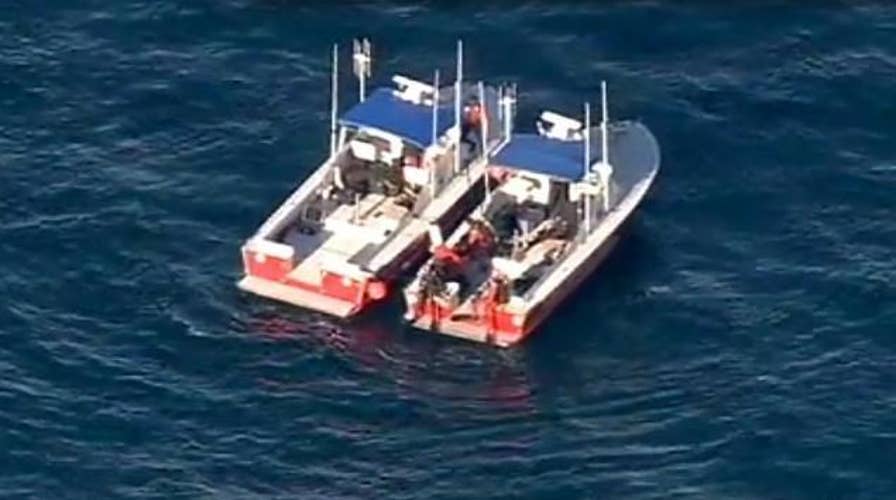Search for 3 suspended after planes collide off Cali. coast
Coast Guard releases statement on investigation
LOS ANGELES – The husband of a pilot who was involved in a midair collision that sent at least one plane plunging into the ocean near the Port of Los Angeles says he believes she did not survive the accident.
Richard Falstrom told The Associated Press on Saturday that his wife, Mary Falstrom, told him the nice weather beckoned her to go fly. He said she never came home and that he's certain her small-engine plane went down.
"She loved flying. It was a passion," he said, adding that she has decades of piloting experience.
His comments came hours after the U.S. Coast Guard suspended the active search for three missing people and instead turned to hunting bodies and wreckage.
Two men, ages 61 and 81, were aboard a plane that was seen on radar colliding with another aircraft flown by a 72-year-old woman around 3:30 p.m. Friday, officials said.
The first plane was a Beech 35 Bonanza and the second was a Citabria, said Allen Kenitzer, a spokesman for the Federal Aviation Administration. However, Falstrom said his wife flew a Super Decathlon, an aerobatic plane by the same maker of the Citabria.
After reports of the crash, divers converged on an area about two miles outside a harbor entrance where a small debris field was found. The water there was 80 to 90 feet deep.
On Friday, divers found wreckage and a pilot's logbook from the Beechcraft, Coast Guard Capt. Jennifer Williams said.
Falstrom said a Coast Guard representative told him crews found part of the tail number of his wife's plane.
Both planes had taken off from the nearby Torrance Airport, and both pilots were experienced, Williams said. All three people live in the nearby South Bay area.
The Los Angeles County Sheriff's Department was using sonar and remotely operated underwater vehicles to search the area where debris and oil were spotted Friday. However, nothing more had been found by Saturday afternoon, said Capt. Jack Ewell of the sheriff's Special Operations Bureau.
The planes could have gone down in different areas or the ocean currents could have moved debris miles away, he said.
As for the chance of survivors, "the odds are definitely not good," Ewell said.
"You do have to consider that a plane crashed and it's very hard to survive that in any conditions, let alone two miles out in deep water," he said.
The crash site was near the Angels Gate light, a lighthouse at the San Pedro Breakwater that is on the National Register of Historic Places. The area is popular for flight students.
Richard Garnett, chief flight instructor with the Long Beach Flying Club, said the pilots practice in an area that is 10 to 20 square miles and at altitudes ranging from 1,000 to 4,000 feet. On a typical day, there will be three or four planes in the air at the same time.
"So with the amount of activity, actually, I think we've been fortunate," he said. "We are really diligent. I don't know why, what happened in this situation."
Friday's midair collision was not the first in the area.
In 2001, four people died when two Cessna airplanes carrying instructors and students collided 1,000 feet above the harbor. In 1986, two small planes flown by students collided. But the aircraft managed to return to their airports, and the four people on board escaped injury.


